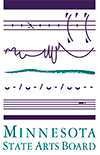
I love the Wizard of Oz! And I love the scene where Toto pulls back the green curtain to reveal the “wizard.” Elections are like that. While all you do is fill in those ovals on your ballot, there’s a ‘wizard’ behind the scenes making everything work.
That ‘wizard’ is the one in charge of running your elections. Let’s call her the ‘election official,’ or EO. Her wizardry enables her to run four entirely different systems, all of which fit together to become an election. But she does so with total transparency. No green curtain!
1) Candidate filings. The EO must make sure each person running qualifies. She must make sure each candidate completes their paperwork.
2) Voter Registration: You are part of your county’s massive voter registration data base. This data base must be kept current–in MN if you haven’t voted in four years, you get bumped off the register. People who’ve passed away or gone to prison or moved out of the county must be taken off. People who’ve moved into the jurisdiction or registered when they turn 18 must be added. When you’ve registered to vote, and show up, the election worker will find you in this data base.
And the whole thing must be protected from hackers using the most up-to-date cyber security practices. There has been one known hacking of voter registration file in an Illinois county. Someone got in, had access to over 500,000 names, but did nothing. These files are not connected to your vote, so your vote cannot be changed or altered…But if someone messes with a voter registration file, they could delete names, which means a voter could show up on Election Day and not be in the system. If the state allows same-day registration, you’d have to run home, get proof of residency, and then register again. A total pain in the butt, but you’ll at least still be able to vote.
3) Voting systems: Your EO must purchase, maintain, and test precinct count scanners, central count scanners, ballot-marking devices for those who need assistance voting, DREs (direct recording electronics–used in the few places left in the country where the votes are marked digitally), and either print paper books of voter registration information or have epollbooks with the same information.
The EO must find enough polling places so the lines are manageable. The EO never knows how many people will show up to vote, so it’s a guessing game—does she have enough polling places? State laws usually spell out how many registered voters can be assigned to a polling location. It’s usually under 3,000, but in some places over 6,000 voters have stood in line for hours because the EO didn’t pay attention to the number of voters, or didn’t have time to set up a new location.
The EO must recruit and train enough poll workers to run the election at each polling place. These poll workers must be trained, and paid.
4) Election Night Reporting: I know nothing about this! Somehow the EO takes all the precinct results and feeds them into a statewide system with the results. Guess I’d better do some more research on that…
The more I learn about elections, the more I think EOs are true wizards, not fake ones like the Wizard of Oz.


4 Responses
I voted today. Minneola township is now all electronic
Same with Red Wing. Big roster book replaced with poll pads…Makes the job faster and more fun. 🙂
Do you like someone looking over your shoulder constantly? At most levels of the election cycle, the public is allowed to watch. Both the major parties usually have volunteers watching. That is well and good. Unfortunately, some people feel they cannot do a good job of watching without touching. That is bad because it introduces a possibility of inadvertent or deliberate error.
I’d be happy to have observers, as long as they didn’t say inappropriate things to the voters (no discussion of politics at all) or try to stop someone from voting. People who claim to mistrust elections are now doing what they can to disrupt them. Since they haven’t found proof of fraud, are they determined to create it themselves? How does this help democracy?